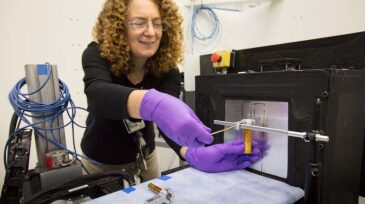Technology
AI is transforming oil and gas, but the real change will come from young professionals (YPs) who bridge technology and field expertise. By leading pilots, building networks, and challenging old assumptions, YPs can drive the industry’s digital transformation from within.
PE Ltd.'s software will allow students and faculty to work directly with modeling technologies and build real-world, job-ready skills.
Founding dean of Missouri S&T’s Kummer College, James D. Sterling, sat down with Joshua Schlegel, associate professor and associate chair of nuclear engineering and radiation science, to discuss why nuclear power is making a comeback and what its resurgence means for the future of energy.
-
As the Permian Basin has boomed again, recent conversations focused on how pipeline takeaway capacity limits the ability of operators to develop the basin to its full potential. In addition to solving the takeaway problem, water management is another bugbear waiting to be addressed.
-
Funding for startups in the upstream industry does not always guarantee that oil and gas companies will want to test the new technology. A new venture and accelerator model hopes to change this through guaranteed pilots.
-
The contract is helping to solidify Europe’s offshore sector as the focal point for the rise of automated drilling technology.
-
Lloyds Register Senior Flow Assurance Engineer Oche Ameh explains what flow assurance is and the importance of this field in oil and gas extraction.
-
When people hear of surfactant research in the oil and gas industry, they most likely think of surfactant flooding. An emerging area of surfactant application in the industry is as a conformance improvement agent.
-
Policies can be very effective at driving behavior, but they must work in concert with enabling technology to realize the outcomes we desire, including increased energy efficiency and reduced emissions.
-
The latest example of the offshore sector's march toward automated wellbore construction will take shape later this year in the North Sea.
-
A team of researchers at the Department of Energy’s Oak Ridge National Laboratory is using a combination of neutron and x-ray scattering to make the hydraulic fracturing safer and more efficient.
-
Since the 1980s, many technical works have focused on improving the ability to detect hydrocarbons inside the riser and safely remove them from the system. This trend gained extra momentum with the advent of systems such as riser-gas handlers and managed-pressure drilling.
-
Downhole drilling dynamics tools and software can assist in understanding the downhole environment, providing a meaningful avenue for drilling optimization.













